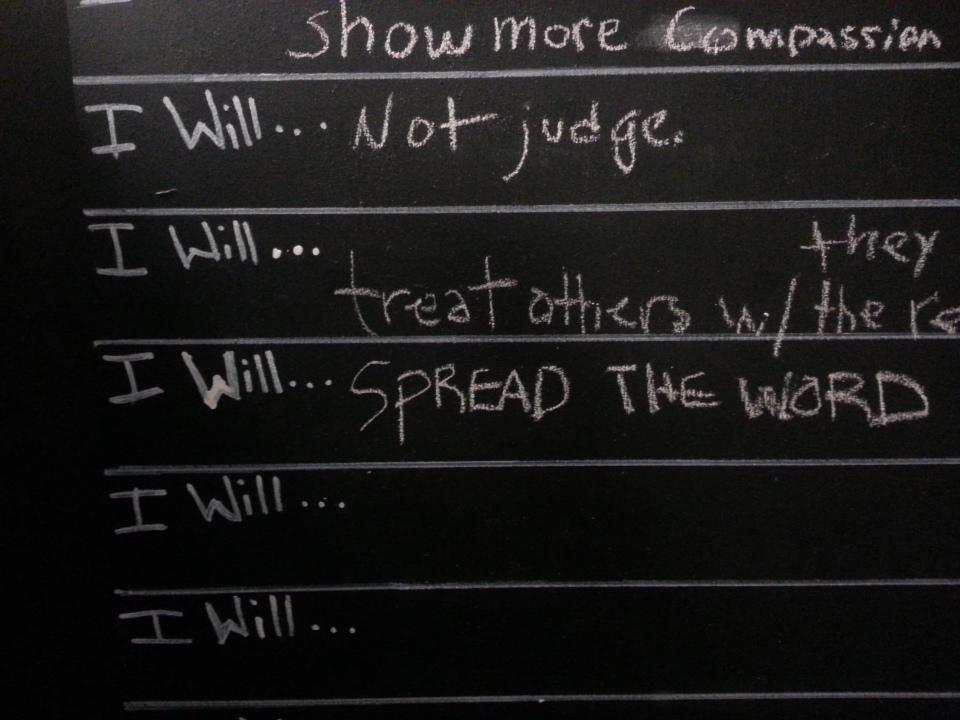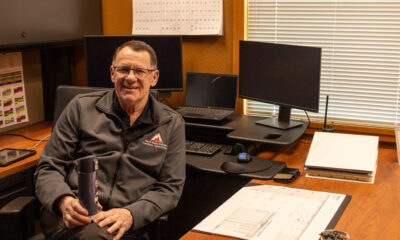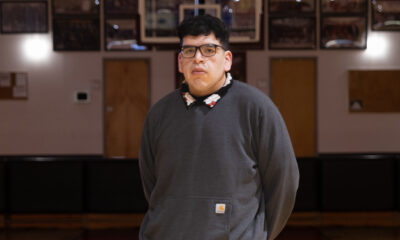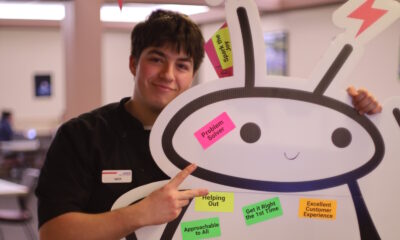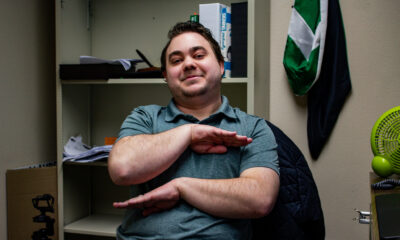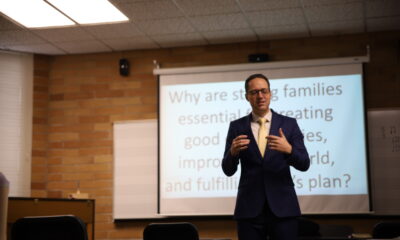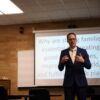The “Footsteps: A journey of many” exhibit returned, giving students information and an idea of what it is like to be put in certain situations dealing with poverty. Each group went through different areas of the exhibit all representing the theme of poverty.
Each exhibit was interactive and featured a story or video about the topic as well as an emotional experience for the audience.
Participants were required to sign a consent form before going through and had the opportunity to discuss their feelings about the journey afterward in what was called the Room of Hope.
Exhibits highlighted four issues. One was the struggles and stereotypes of being homeless, illustrated by reading off common names the homeless are called such as “drunk” or “lazy” with real stories supporting them, as well as an exhibit dedicated to the struggles of those who are different, having participants made to consider hiding their family or significant other from society, friends and employers–much like those who are gay or have different religious beliefs than many others.
There was also a video on orphan children and their hardships, partly narrated by Israel Nehemiah Musonda, vice president of the International students club, whose mother, Monica Musonda, started an orphanage in Zambia. There was an exhibit with statistics and maps about sex trafficking wherein students were given sticky notes and asked to place them on a map on the country they most associate with sex trafficking. The notes were mainly concentrated around China and Russia but the group came to find out that sex trafficking is a big problem in the US as well. After being presented with the facts an interactive exhibit and video followed showing the effects and impact it has on victims.
“It really surprised me,” said Sage Piatt, education, 20, Sandpoint. “It’s right over in Seattle and that is so close to home.”
After the exhibit there was a Room of Hope where participants had the opportunity to talk about their feelings about the experience and have a chance to talk to a counselor as well if the content was overwhelming. The Room of Hope was a safe place and a calm atmosphere that allowed people to share without fear of judgment.
There was a board of sticky notes there where each participant wrote down which exhibit had the biggest impact on them. The room of hope also held a range of materials and programs that one could get involved in to help any of these causes, whether it be volunteering, donating or becoming a member of awareness groups, there are many ways to help with the issues presented through footsteps.
Before leaving the footsteps journey participants pass by two large chalkboards with the phrase “I will…” and a space after to be filled in. These were for people to anonymously make a promise of what they will do to help better themselves, their community or even the world.
“It’s basically a self commitment,” said Tim Gerlitz, who was directing the room of hope and is the disability, health and counseling director at NIC. “Write something that you feel compelled to do.”
